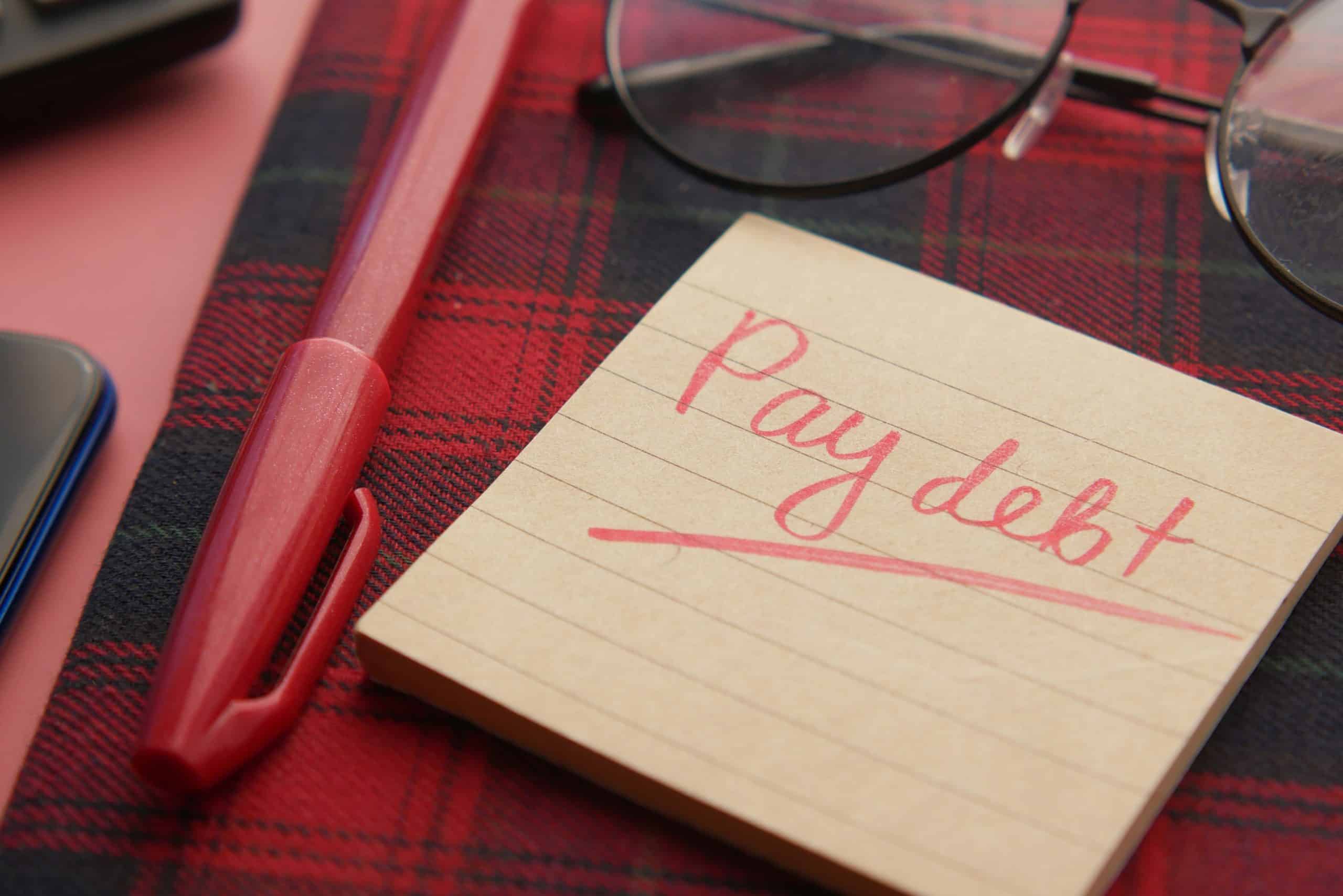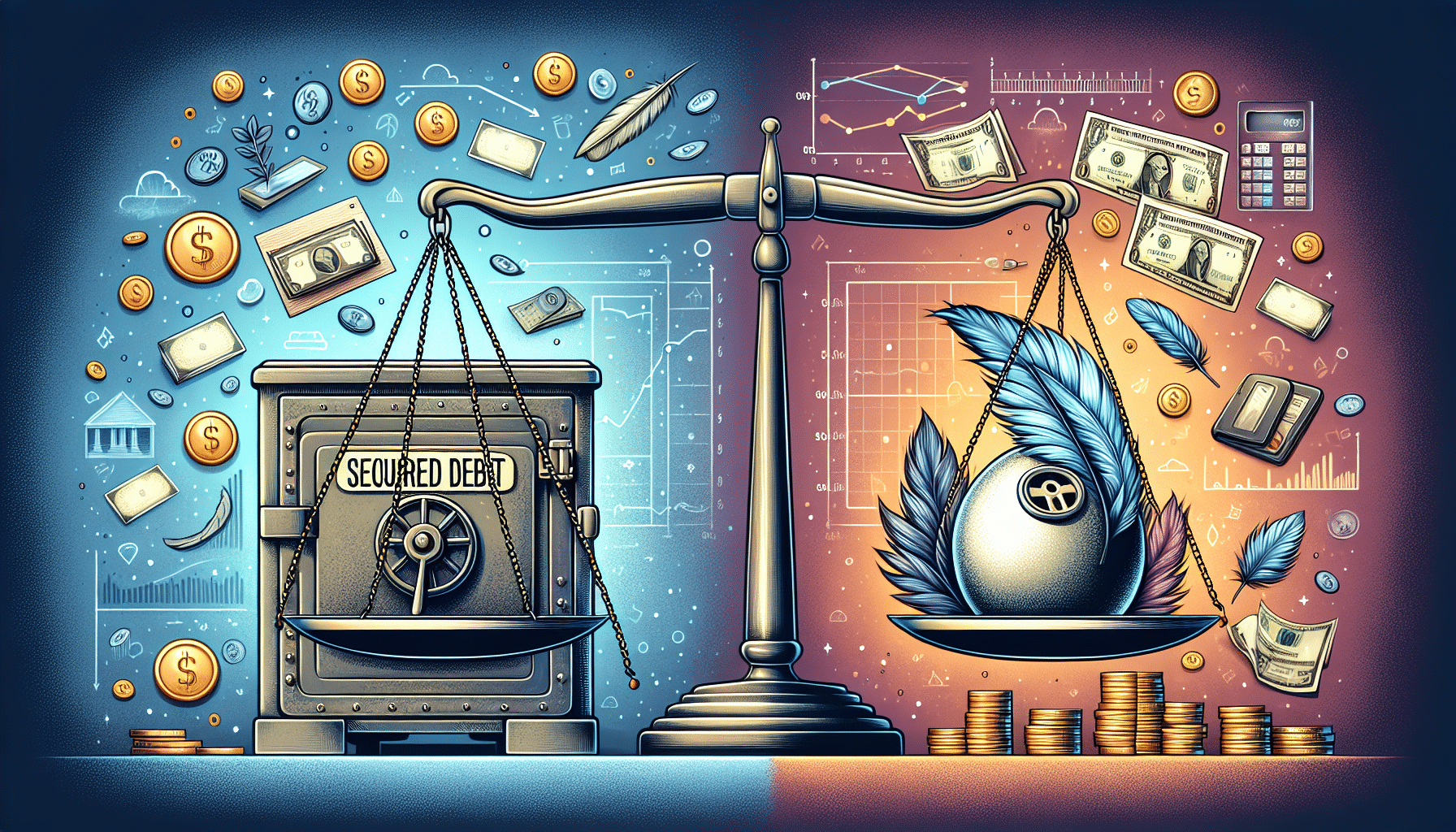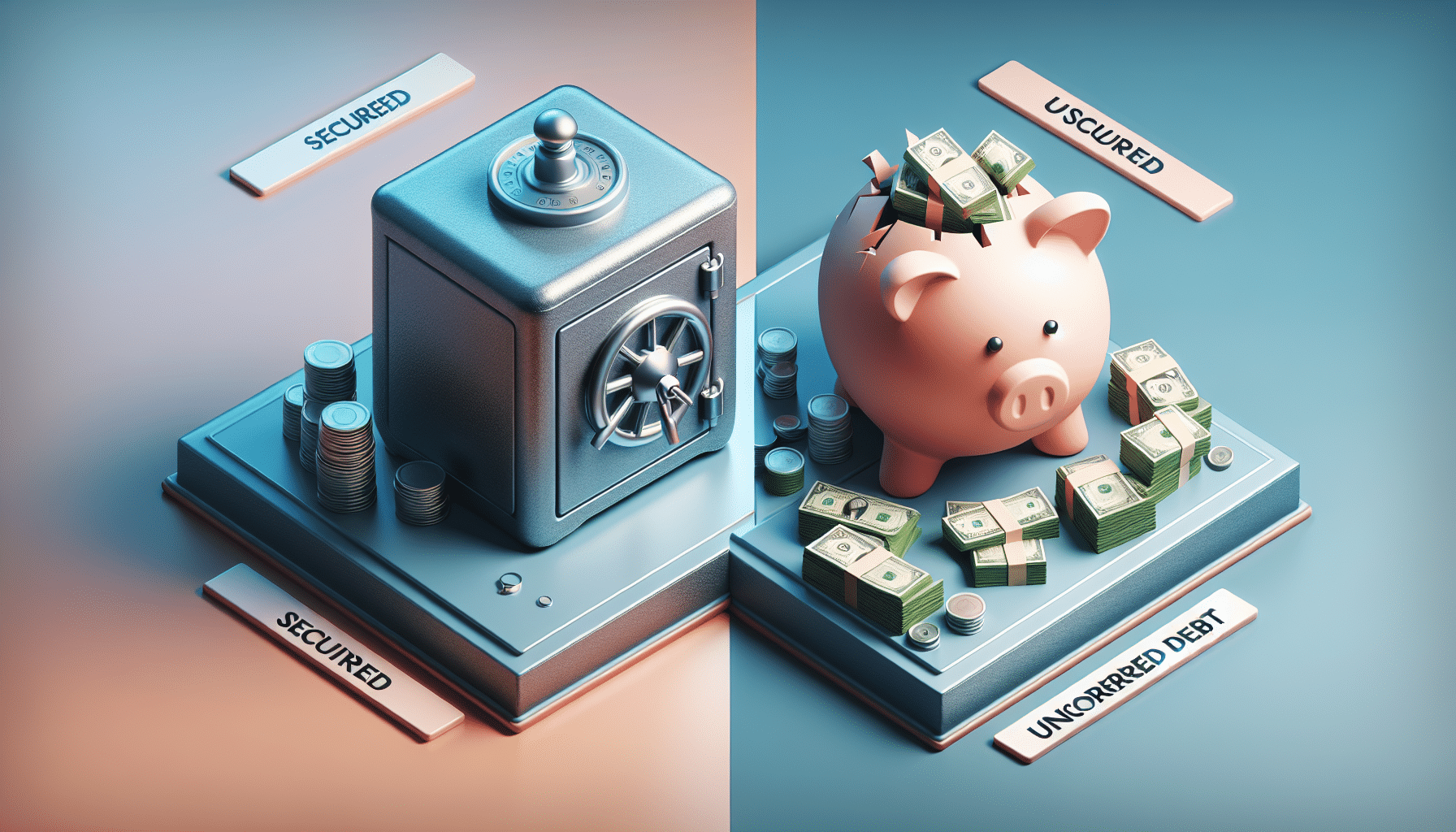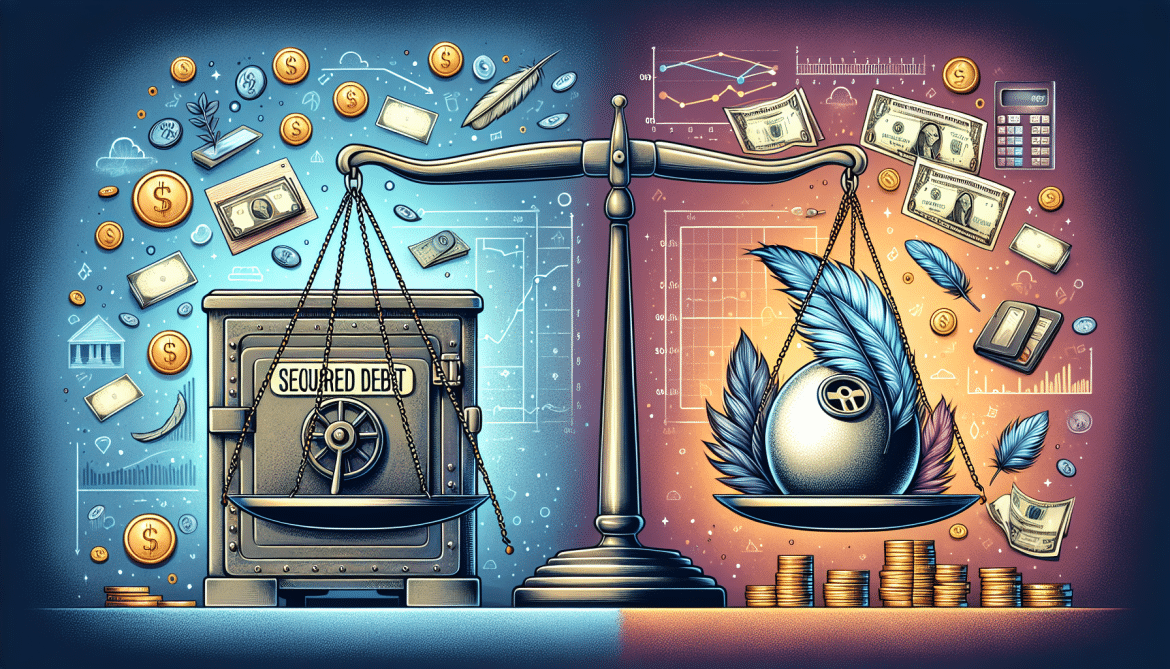In the world of personal finance, it's important to understand the different types of debt you may encounter. Secured and unsecured debt are two common terms you'll often hear, but what do they actually mean? Secured debt refers to loans that are backed by collateral, such as a house or car, while unsecured debt doesn't have any collateral attached to it. Understanding the distinction between the two can help you make informed decisions about your financial obligations and potentially avoid unnecessary risks. Let's explore the differences between secured and unsecured debt, so you can gain a clearer understanding of your financial landscape.

This image is property of images.unsplash.com.
Secured Debt
Definition and Explanation
Secured debt refers to loans or credit obligations that are backed by collateral. Collateral can be any valuable asset that the borrower owns, such as a house, car, or other property. The collateral serves as a guarantee to the lender that if the borrower fails to repay the debt, they can seize and sell the collateral to recover their losses. This gives the lender added security and reduces the risk of default.
Examples of Secured Debt
Some common examples of secured debt include mortgage loans, auto loans, and secured credit cards. Mortgage loans are used to finance the purchase of a home, with the property itself serving as collateral. Auto loans are obtained for financing the purchase of a vehicle, with the car as collateral. Secured credit cards require a cash deposit as collateral, which sets the credit limit for the cardholder.
Advantages of Secured Debt
Secured debt offers several advantages to both borrowers and lenders. For borrowers, secured debt often comes with lower interest rates compared to unsecured debt. This is because the collateral reduces the lender's risk and makes them more willing to offer favorable terms. Additionally, secured debt allows borrowers to access larger loan amounts, as the collateral provides the lender with reassurance.
Disadvantages of Secured Debt
However, secured debt also has its downsides. One major disadvantage is the risk of losing the collateral if the borrower defaults on their payments. If a borrower is unable to make payments, the lender may repossess or foreclose on the collateral, leading to potential financial and personal repercussions. Additionally, the process of obtaining secured debt can be more time-consuming, as lenders typically require a thorough evaluation of the collateral and its value.
Types of Secured Debt
Mortgage Loans
Mortgage loans are one of the most common types of secured debt. When you purchase a home, you usually take out a mortgage loan to finance the purchase. The property itself serves as collateral for the loan, allowing the lender to foreclose and sell the home if the borrower defaults on their payments. Mortgage loans often have long repayment terms, typically ranging from 15 to 30 years.
Auto Loans
Auto loans are another form of secured debt. When you finance the purchase of a vehicle, the car itself serves as collateral for the loan. If you fail to make your loan payments, the lender has the right to repossess the car. Auto loans usually have shorter repayment terms compared to mortgage loans, typically ranging from 3 to 7 years.
Secured Credit Cards
Secured credit cards are a type of credit card that requires a cash deposit as collateral. The cash deposit serves as the credit limit for the cardholder. This type of card is often used by individuals who have limited or poor credit history, as it allows them to build or rebuild their credit. If the cardholder fails to make payments, the card issuer can use the cash deposit as repayment for the debt.
Unsecured Debt
Definition and Explanation
Unsecured debt refers to loans or credit obligations that are not backed by collateral. Unlike secured debt, unsecured debt does not require the borrower to pledge any assets as security. Instead, lenders evaluate the borrower's creditworthiness based on factors such as income, credit history, and employment stability. Since there is no collateral, unsecured debt poses a higher risk to lenders and typically comes with higher interest rates.
Examples of Unsecured Debt
Some common examples of unsecured debt include credit cards, personal loans, and student loans. Credit cards are a form of unsecured debt as they do not require any collateral. Personal loans are often used for various purposes such as debt consolidation or home improvements and do not require collateral. Student loans are another type of unsecured debt that helps finance education expenses.
Advantages of Unsecured Debt
Unsecured debt offers certain advantages to borrowers. One significant advantage is the absence of collateral, which means borrowers don't risk losing any assets if they default on payments. Unsecured debt also tends to have a more streamlined application process, as it does not require a valuation or assessment of collateral. Furthermore, unsecured debt can be an effective tool for building credit history and improving credit scores.
Disadvantages of Unsecured Debt
However, unsecured debt comes with its own set of disadvantages. Due to the higher level of risk for the lender, unsecured debt typically carries higher interest rates compared to secured debt. This means borrowers will incur more interest charges over the life of the loan or credit card balance. Additionally, lenders may be more cautious when offering unsecured debt, making it harder for borrowers with low credit scores to qualify.
Types of Unsecured Debt
Credit Cards
Credit cards are a common example of unsecured debt. They provide a revolving line of credit that can be used for various purchases. When you use a credit card, you are essentially borrowing money from the card issuer. The credit limit on the card is determined based on your creditworthiness, income, and other factors. If you fail to make payments, the issuer may report the delinquency to credit bureaus, which can negatively impact your credit score.
Personal Loans
Personal loans are another form of unsecured debt that can be used for a variety of purposes. These loans are typically obtained from banks, credit unions, or online lenders. The loan amount, interest rate, and repayment terms are determined based on the borrower's creditworthiness and income. Personal loans are often used for debt consolidation, major purchases, or unexpected expenses.
Student Loans
Student loans are specifically designed to help finance education expenses. These loans are usually offered by the government or private lenders and do not require collateral. The interest rates and repayment terms may vary depending on the type of student loan, borrower's credit history, and if the loan is subsidized or unsubsidized. Student loan repayment typically begins after the borrower graduates or leaves school.
This image is property of images.unsplash.com.
Key Differences Between Secured and Unsecured Debt
Collateral Requirement
The most significant difference between secured and unsecured debt is the collateral requirement. Secured debt requires the borrower to pledge collateral, such as a house or car, to secure the loan. In contrast, unsecured debt does not require any collateral, and the lender evaluates the borrower's creditworthiness based on other factors.
Risk Level
Secured debt poses less risk to lenders compared to unsecured debt. With collateral in place, lenders have a means to recover their losses if the borrower defaults on payments. Unsecured debt, on the other hand, holds a higher risk for lenders due to the absence of collateral, which can make it more difficult for borrowers to qualify and result in higher interest rates.
Interest Rates
Since secured debt carries less risk for lenders, they typically offer lower interest rates compared to unsecured debt. Collateral provides a safety net for the lender, reducing the likelihood of financial loss. Unsecured debt, on the other hand, poses a higher risk to lenders, resulting in higher interest rates to compensate for the lack of collateral.
Repayment Terms
The repayment terms for secured debt and unsecured debt can vary depending on the type of loan or credit. However, secured debt often has longer repayment terms, such as 15 to 30 years for mortgage loans, due to the larger loan amounts involved. Unsecured debt, such as personal loans or credit cards, generally has shorter repayment terms, ranging from a few months to several years.
Factors to Consider When Choosing Between Secured and Unsecured Debt
Financial Situation
Your financial situation plays a crucial role in determining whether secured or unsecured debt is more suitable. If you have valuable assets that can serve as collateral, secured debt may be a viable option. However, if you don't have assets to pledge or are not comfortable risking your assets, unsecured debt may be a better choice.
Purpose of the Debt
Consider the purpose of the debt when deciding between secured and unsecured options. Secured debt is often used for specific purposes, such as purchasing a home or a vehicle, as the collateral ties directly to the purpose. Unsecured debt offers more flexibility and can be used for various purposes, including major purchases or consolidating existing debts.
Credit Score
Your credit score plays a significant role in determining the loan terms and interest rates you qualify for. Secured debt may be more accessible for individuals with lower credit scores, as collateral can mitigate the risk for lenders. Unsecured debt, especially with favorable terms, may require a higher credit score to qualify.
Flexibility
Consider the level of flexibility you require when choosing between secured and unsecured debt. Secured debt tends to have stricter terms and requirements due to the collateral involved. Unsecured debt offers more flexibility and may be an option if you value the ability to use funds for various purposes without restrictions.
This image is property of images.unsplash.com.
Risks Associated with Secured Debt
Risk of Losing Collateral
One of the major risks associated with secured debt is the potential loss of collateral. If you are unable to make payments, the lender has the right to repossess or foreclose on the collateral, leading to the loss of your valuable assets. This can have severe financial and personal consequences, especially if the collateral is essential, such as a home or car.
Foreclosure and Repossession
With secured debt, such as a mortgage loan or auto loan, the lender has the legal right to foreclose or repossess the collateral in the event of payment default. Foreclosure involves the lender selling the property to recover their losses, while repossession refers to the lender taking back the vehicle. Both processes can negatively impact your credit score and make it more challenging to secure credit in the future.
Risks Associated with Unsecured Debt
Potential Impact on Credit Score
Failing to make timely payments on unsecured debt can have a significant impact on your credit score. Late payments, defaults, or high credit card balances can result in negative marks on your credit report, which can lower your credit score. A poor credit score can make it more difficult to qualify for future loans or credit, and you may face higher interest rates when you do qualify.
Higher Interest Rates
Unsecured debt generally carries higher interest rates than secured debt due to the increased risk for lenders. Lenders compensate for the absence of collateral by charging higher interest rates, which can result in more significant interest charges over the life of the loan. Higher interest rates can lead to higher monthly payments and a longer repayment period.

Managing Secured and Unsecured Debt
Creating a Budget
Regardless of the type of debt you have, creating and sticking to a budget is essential for effective debt management. A budget helps you track your income and expenses, allowing you to allocate funds towards debt repayment and other financial goals. By prioritizing and managing your expenses, you can ensure that you are making timely payments towards both secured and unsecured debts.
Making Timely Payments
Timely payments are crucial for maintaining good credit standing and avoiding penalties or additional fees. Set up automatic payments or reminders to ensure that you make your payments on time each month. Prioritize paying at least the minimum amount due on your unsecured debt to avoid late fees and negative impacts on your credit score. For secured debt, such as mortgage or auto loans, ensuring on-time payments is even more critical to avoid the risk of losing the collateral.
Negotiating with Creditors
If you are facing financial difficulties and are struggling to meet your debt obligations, consider reaching out to your creditors. Some lenders may be willing to work with you to develop a more manageable repayment plan, reduce interest rates, or even forgive a portion of the debt. Communication and proactive efforts to address the situation can make a difference in managing both secured and unsecured debt.
Conclusion
Being aware of the differences between secured and unsecured debt is crucial for making informed financial decisions. Secured debt provides advantages such as lower interest rates and access to larger loan amounts but carries the risk of losing collateral. Unsecured debt offers flexibility but often comes with higher interest rates and stricter qualification requirements. Consider your financial situation, the purpose of the debt, and your credit score when choosing between secured and unsecured options. Remember to manage your debt effectively by creating a budget, making timely payments, and communicating with creditors if needed. With proper management, you can navigate secured and unsecured debt while maintaining your financial well-being.




